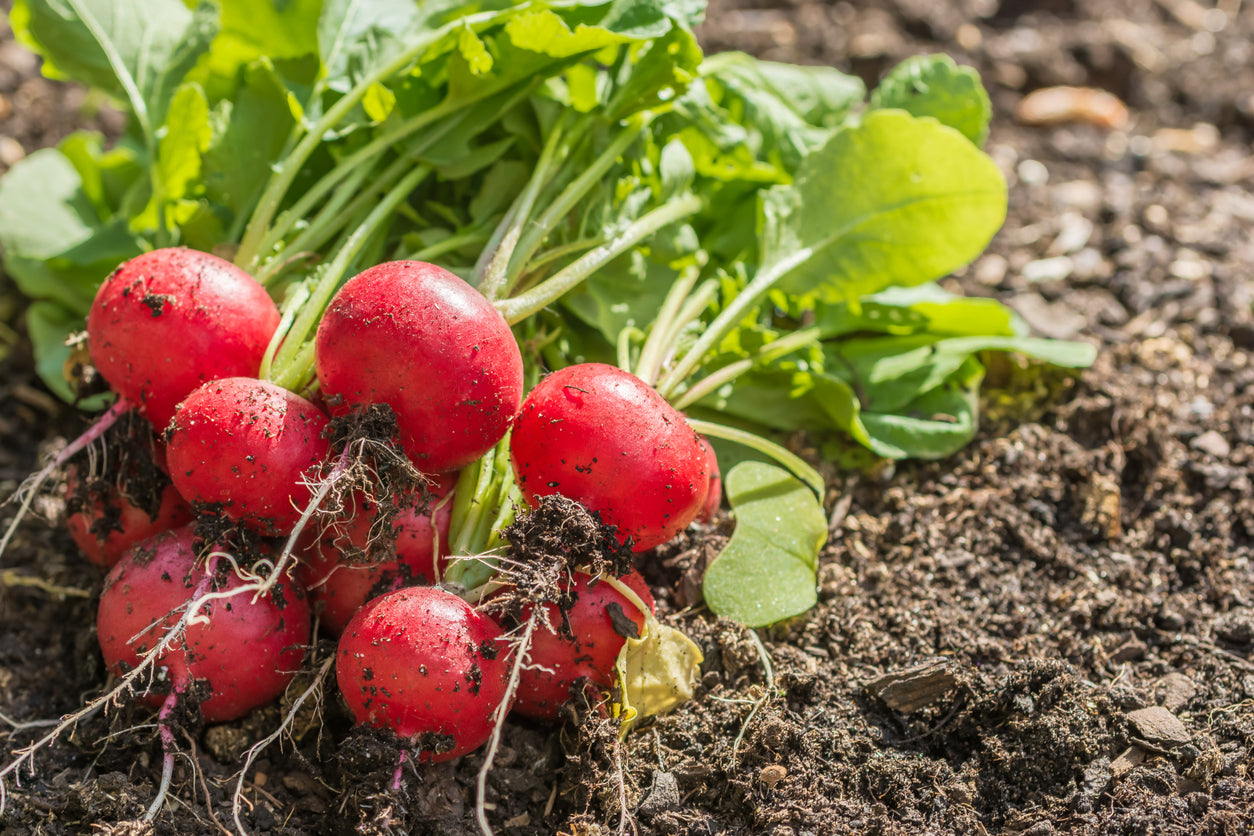Relish the radish and LOWER the risk of cardiovascular issues and cancer

For many, radishes may not be “top of mind” when it comes to examples of flavorful, healthy foods. But these crunchy root vegetables have plenty to offer, including an appealing “snap” that makes them a refreshing alternative to more familiar vegetables. (Some radish fans even confess to finding the peppery flavor slightly addictive).
However, radishes are good for much more than merely spicing up mixed salads. Botanically known as Raphanus sativa, radishes are members of the Brassica family of cruciferous vegetables, which includes Brussels sprouts, broccoli, cabbage and kale. With many of the same health-giving properties as their cruciferous cousins, radishes have long been advised in Ayurveda and Traditional Chinese Medicine to treat fever, inflammation, infections and sore throats. Now, modern scientific research supports the ability of compounds in radishes to help prevent deadly chronic illnesses, including heart disease and cancer.
“The right stuff” - Radishes offer vitamins and minerals at a low-calorie cost
Low in carbs, sugar and calories (a half-cup of sliced radishes offers up a negligible 12 calories), these little root vegetables still feature impressive amounts of important micronutrients. For example, that half-cup of radishes contains 14 percent of the recommended daily amount of antioxidant vitamin C, along with healthy amounts of riboflavin, niacin, thiamine and folate. These B vitamins are indispensable for proper brain function and cell metabolism.
Radishes are no slouches when it comes to supplying essential minerals, either. That same half-cup of radishes contains healthy amounts of bone-building calcium, iron, manganese and potassium. The serving also features a gram of fiber, which can improve digestion, prevent constipation and promote healthy weight.
Studies suggest: Radish constituents prevent cancer cell growth
Like other members of the cruciferous vegetable family, radishes are rich in antioxidant compounds known as isothiocyanates – and consuming these appears to lower the odds of developing cancer. Over the past decade, several studies have shown that isothiocyanates help prevent tumor growth by neutralizing cancer-causing toxins and flushing them from the body. One isothiocyanate in particular (sulforaphane) is believed to be particularly powerful.
In an intriguing 2010 study, researchers reported that isothiocyanates from cruciferous vegetables caused apoptosis - a type of pre-programmed cell suicide - in various types of cancer cells.And, in a 2018 review published in Molecular Nutrition and Food Research, the scientists reported that a ten-day course of an isothiocyanate-rich cruciferous vegetable caused increased DNA repair activity in smokers - suggesting that the compounds could alleviate the DNA damage that triggers lung cancer.
Additional studies indicate that women who consume higher amounts of Brassica vegetables, such as radishes, have a significantly lower risk of developing breast cancer.
While more clinical research is needed, these early findings on isothiocyanates are promising.
Support your heart with nitrate-rich radishes
As if radishes’ anticancer properties weren’t encouraging enough, they may act against heart disease - the Number One killer in the nation.
Radishes are rich in nitrates - which help to widen the blood vessels, reduce blood pressure and allow more oxygen-rich blood to reach the heart muscle. They also contain catechins, a group of healthful compounds found in fruits, vegetables, green tea and red wine. In one review published in Polyphenols in Human Health and Disease, researchers concluded that catechins are linked with improved heart health because of their antioxidative, blood pressure-lowering, anti-inflammatory and blood clot-fighting capabilities.
In addition, radishes are rich in coenzyme Q10, a vitamin-like nutrient that increases the efficiency of the mitochondria (otherwise known as the “power centers” of cells) and reduces the oxidative damage that can trigger heart disease. Finally, eating radishes enhances the body’s production of adiponectin, a hormone that helps to metabolize fat and reduce cholesterol in arteries.
Use radishes to add pops of color and flavor to recipes
Red radishes, also called globe radishes, are the most common type in North America. With their crimson skins and white interiors, red radishes make an eye-catching addition to foods. Radishes are also available in black, scarlet, purple, pink, yellow or white varieties.
While radishes are healthful foods, they should be enjoyed in moderation. Eating large amounts of radishes can interfere with thyroid hormone production in people with iodine deficiencies.
You can slice radishes and add them to green salads, chicken salad or coleslaw - or perch them atop burgers, much as you would a sliced onion. If you find the taste of radishes a little too nippy, you can create a mellower flavor by roasting them with olive oil and garlic.
To make a tangy radish dip, simply blend a quarter of a cup of chopped radishes with a half a cup of plain Greek yogurt, a minced clove of garlic and a splash of red wine vinegar.
Radishes not only spark up recipes, but they support all-over health and well-being. Maybe it’s time to recognize the under-rated radish!
Sources for this article include:
NIH.gov





